The current state of the air defense of the countries of the former Soviet Union republics. Part 2
Ukraine
After the collapse of the Soviet Union, a powerful group of air defense forces remained in Ukraine, which was similar to none of the Union republics. Only Russia possessed a large arsenal of anti-aircraft weapons. In 1992, the airspace of the Ukrainian SSR was defended by two corps (49-th and 60-th) of the 8-th separate air defense army. In addition, on the territory of Ukraine there was the 28 body of air defense of the 2 body of a separate air defense army. The 8 air defense army included: 10 fighter and 1 mixed air regiment, 7 anti-aircraft missile brigades and regiments, 3 radio engineering brigades and regiment. The artillery of the fighter regiments consisted of interceptors: Su-15TM, MiG-25PD / PDS, MiG-23ML / MLD. From the end of 80, several air regiments were in the process of being re-equipped with new equipment. Su-27 fighters managed to get 136 gv.ap and 62 ip. In total, after the division of Soviet property, Ukraine got more than 2800 aircrafts for various purposes, including 40 Su-27 and more 220 MiG-29. In 1992, Ukraine had the fourth largest fleet of combat aircraft in the world, behind only US, Russia and To China. Training for air defense troops was carried out at the Higher Engineering Radio Engineering Academy in Kharkov, at the Higher Anti-aircraft Missile Command School in Dnepropetrovsk and at the Training Regiment in Evpatoria, where junior specialists were trained.
In 1991, the 8 Army of the Air Defense Army included 18 anti-aircraft missile regiments and anti-aircraft missile brigades that had a 132 anti-aircraft missile division. This number of anti-aircraft divisions is comparable to the current number of aircraft in the Russian videoconferencing system. The structure and armament of the ZRV deployed in Ukraine were similar to those adopted by the USSR Air Defense Forces. The 8 Army Air Defense Forces had the following air defense missile systems: С-75М2 / М3, С-125М / М1, С-200А / В and С-300ПТ / ПС.
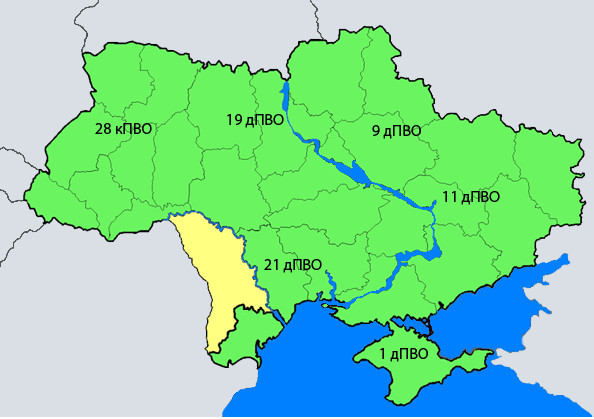
In Vasilkov, Lviv, Odessa, Sevastopol and Kharkiv were deployed radio crews, as part of which were radio battalions, and some radio companies, which operated more than 900 radar: 5N84A, P-80, P-37, P-15U, P-18, 5Н87, 64Ж6, 19Ж6, 35D6 and radio altimeters: PRV-9, PRV-11, PRV-13, PRV-16, PRV-17. In addition to radars, which had a greater or lesser degree of mobility, in Ukraine there were several purely stationary stations 44Ж6 (stationary radar "Defense-14") and 5Н69 (СТ-67). All the means of the RTW ZRV and the IA Air Defense System were connected into a single tactical whole by the newest at that time systems of the automated control system Osnova, Senezh and Baikal. In the Ukrainian air defense network inherited from the Soviet Union after its collapse, the means of detection and the air defense system were organized so that they could protect strategic objects and geographic regions. Among them are industrial and administrative centers: Kiev, Dnepropetrovsk, Kharkov, Nikolaev, Odessa and, until recently, the Crimean peninsula. During Soviet times, the air defense system was located along the western border and throughout Ukraine.
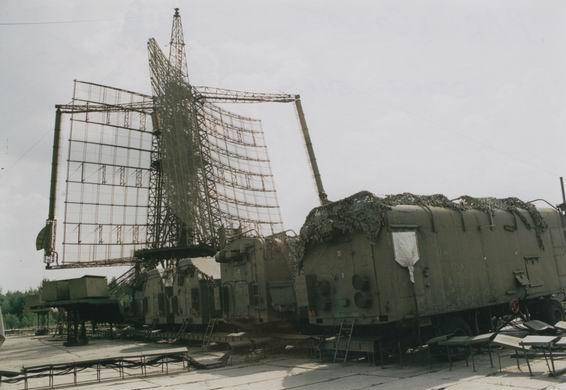
However, much of this Soviet legacy turned out to be redundant for an independent Ukraine. By 1997, interceptors: MiG-25PD / PDS, MiG-23ML / MLD and Su-15TM were decommissioned or transferred “for storage”. A significant part of the modern MiG-29 was put up for sale. Since gaining independence, Ukraine has exported about 240 military aircraft and helicopters. Of these, more than 95% are vehicles inherited from the division of the Soviet Air Force and Air Defense. Of the new aircraft for export, only the transport An-32 and An-74 were built. After 20 years of independence, the number of combat aircraft capable of effectively intercepting air targets and fulfilling tasks of gaining superiority in the air has been reduced many times. So, in 2012, 16 Su-27 and 20 MiG-29 were in flight condition, although in fighter aviation formally there were 36 Su-27s and 70 MiG-29s. According to the annual report “Flightglobal Insight's World Air Forces 2015”, the number of planes and helicopters of the Ukrainian Air Force in flight condition does not exceed 250 units.
Layout of permanently based airfields of Ukrainian fighters
Ukrainian fighters are based on the following airfields: Vasilkov, Kiev region (40 brigade of tactical aviation), Mirgorod, Poltava region (831 brigade of tactical aviation), Ozerny, Zhytomyr region (9 brigade of tactical aviation), Ivano-Frankivsk, Ivano -Frankivsk region (114-I brigade of tactical aviation). After the start of the ATO, the restoration of previously unused airfields was announced: Kolomyia in Ivano-Frankivsk region and Kanatovo in Kirovograd region.
In addition to aircraft factories in Kiev and Kharkov, Ukraine inherited two aircraft repair enterprises from the USSR: Zaporozhye aircraft repair plant MiGremont and Lviv State Aircraft Repair Plant. Having a significant debt for consumed energy, Ukraine could not afford to purchase new fighters and in the beginning of the 2000-s began to make certain attempts to upgrade existing ones. With the modernization of the MiG-29, the case helped, at the end of 2005, Ukraine entered into a contract with Azerbaijan for the supply of 12 MiG-29 and 2 MiG-29UB from the Air Force. In this case, according to the terms of the contract, the aircraft had to undergo a refurbishment and modernization. Thus, in Ukraine, we had the opportunity to try out "in practice" theoretical developments under the program of "small modernization" of the MiGs. Work on the modernization of the Ukrainian MiG-29 (modification of 9.13) began at the Lviv aircraft repair plant in 2007 year. The first three upgraded fighters were commissioned by the Air Force in 2010 year. The upgraded aircraft received the designation MiG-29UM1. In the course of modernization, in addition to the work on the extension of the resource, new navigation and communication tools were installed that meet the requirements of ICAO. Upgrading the radar with a planned increase of about 20% detection range compared to the original data did not take place. To achieve the required characteristics, it is necessary to create (or buy from the Russian Phazotron) a new station, which in modern conditions is, of course, impossible. The Ukrainian media reported on 12 planned to upgrade MiGs. It is not clear whether we are talking about machines designed for their own air force or foreign customers. So, after the start of the armed conflict in the east of the country, the MiG-29 fighter after repairs at the Lviv aircraft repair plant departed for the Republic of Chad.
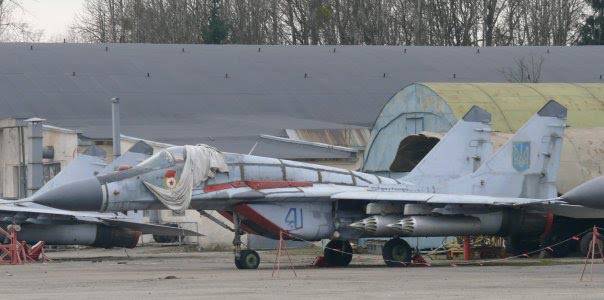
Modernization of the Su-27 was delayed, the first aircraft undergoing repairs and "small" modernization, was transferred to the Air Force of Ukraine by the Zaporizhia Aircraft Repair Plant in February 2012 of the year. And in the middle of April 2012, the overhaul of another Su-27 was completed. To date, it is known about six upgraded Su-27 ПХNUMXМ, Su-1С27М and Su-1УБМ27. They entered the regiments based on airfields in Mirgorod and Zhytomyr. In terms of their capabilities, the Ukrainian MiG-1 and Su-29 are significantly inferior to similar fighters upgraded in Russia. In general, the combat effectiveness of Ukrainian fighter aircraft is low, and the future is foggy. Ukraine had previously had very limited capabilities to maintain its air force in a state of combat, and after the destabilization of the situation in the country and the actual beginning of the civil war, these possibilities became even smaller. Due to the lack of resources (kerosene, spare parts and qualified specialists), most of the Ukrainian fighter aircraft was chained to the ground. In the course of the ATO conducted by the armed forces in the east of Ukraine, two MiG-27 (both from the 29 brigade of tactical aviation, Ivano-Frankivsk) were shot down.
Currently, more than half of the radars leading the control of the airspace over the territory of Ukraine are Soviet-made radars: 5H84А, П-37, П-18, П-19, 35Д6. However, there are also a significant number of fairly new stations 36D6. The construction of this type of radar was carried out at the Iskra Research and Production Complex in Zaporozhye. This enterprise is one of the few in Ukraine whose products are in steady demand in the world market and are included in the list of strategically important ones.
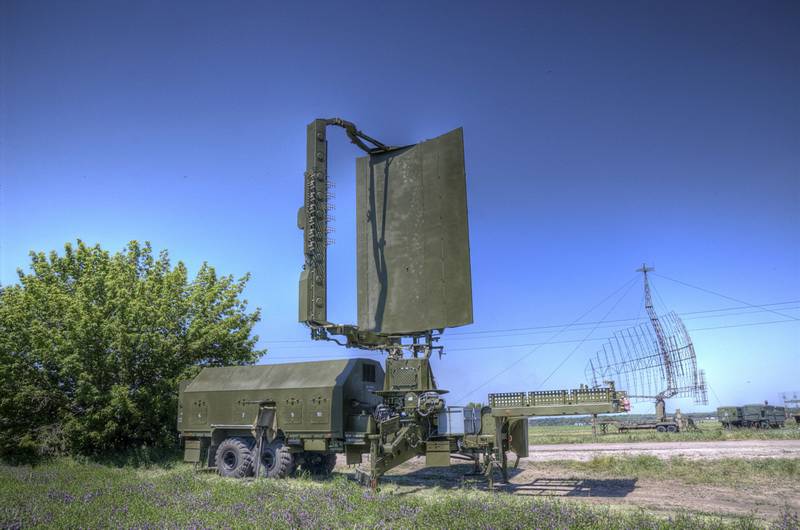
Currently, Iskra is producing mobile three-coordinate radars for the 36-6-M airspace survey. This station is currently one of the best in its class and is used in modern automated air defense systems, anti-aircraft missile systems for detecting low-flying air targets, covered by active and passive interference, to control the air traffic of military and civil aviation. If necessary, the 36D6-M operates as a stand-alone control point. The detection range of 36D6-M is up to 360 km. For radar transportation, KrAZ-6322 or KrAZ-6446 tractors are used, the station can be deployed or collapsed within half an hour. Radars of this type were actively supplied abroad, one of the largest buyers of 36D6-M radar is India. Georgia received several stations before the outbreak of the Russian-Georgian conflict in 2008.
Even in Soviet times, the development of a mobile three-axis radar of a circular review with a phased array 79K6 "Pelikan" began on the SPC "Iskra". However, due to insufficient funding, the first prototype was created only in 2006 year. In the same year, state tests were conducted, and in the summer of 2007, the 79K6 radar was officially adopted by the armed forces of Ukraine. The export version is designated 80K6.
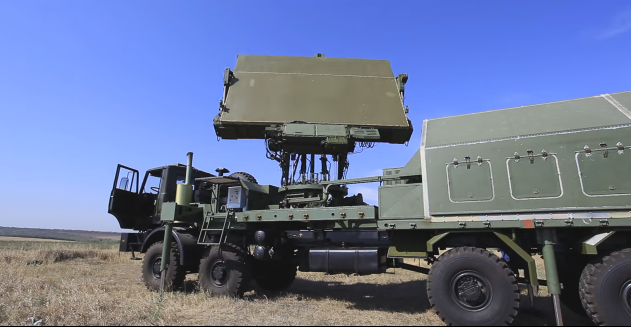
The station is intended for use in the composition of the Air Defense Forces and the Air Force as an information link for monitoring and issuing target designation to anti-aircraft missile systems and automated air traffic control systems. The radar is located on two KrAZ-6446. The deployment time of the radar is 30 minutes. Detection range of high-altitude aerial targets - 400 km.
In addition to the construction of the modernized 36D6-M and the creation of the new 79K6, the Soviet radar 5Н84, П-18 and П-19 were modernized in Ukraine. The meter range radar 5Н84 is an evolutionary variant of the development of P-14 radar. The Ukrainian version of the 5H84AMA was adopted in 2011 year. During the modernization of 5Н84, a transition was made to a modular design and a new element base, which made it possible to increase the reliability of the station and reduce energy consumption. The number of working frequencies and noise immunity has increased. The upgraded radar has the ability to automatically track and receive data from other stations. Included with the 5H84AMA is the use of the upgraded radio altimeters PRV-13 and PRV-16.
Ukraine has created options for upgrading the P-18 mobile meter radar with digital processing and automatic transmission of information: P-18М (adopted in 2007 year) and П-18 Malachite (adopted in 2012 year). At the moment, the troops delivered more than 12 radar. In the course of the modernization, the task was to improve the accuracy of the measurement of coordinates, improve the protection against active and passive interference, achieve an increase in the level of reliability and service life. Radar П-18 "Malachite" can track objects whose speed reaches one thousand meters per second. Fighter type MiG-29, flying at an altitude of 10000 m, the station detects at a distance of approximately 300 kilometers. Dimensions of the upgraded version of the radar significantly decreased compared with the base P-18. Now "Malachite" freely fits on one KRAZ and trailer.
In 2007, the upgraded two-coordinate decimeter P-19MA radar was put into service. During the modernization, the station was transferred to a modern solid-state element base, coupled with computational tools. As a result, the power consumption has decreased and the time between failures has increased, the detection performance has improved, the possibility of automatic tracking of the trajectories of air objects has been realized. The station provides reception of data from other radars, the exchange of radar information occurs on any data exchange channels in the agreed exchange protocol.
Before the beginning of the civil war in Ukraine, there was a continuous radar field over most of the country’s territory. However, after the outbreak of the conflict, the situation deteriorated significantly, part of the RTV equipment deployed in the east of the country was destroyed during the fighting. Thus, in the morning of May 6, 2014, as a result of an attack on a radio engineering unit in the Luhansk region, one radar station was destroyed. The following losses of XT were suffered by 21 on June 2014 of the year, when the radar in Avdiivka was destroyed as a result of shelling from mortars. Observers note that part of the 36Д6, П-18 and П-19 radar was relocated from the western regions of Ukraine to the east of the country. This is due not so much to an attempt to repel attacks by Russian aviation, but to control the flights of its combat aircraft in the area of the ATO.
If with the production of radars in Ukraine things are more or less normal, then with long-range anti-aircraft complexes everything is not as good as the Ukrainian leadership would like. As already mentioned, independent Ukraine, after the division of the Soviet legacy, acquired huge stocks of equipment and weapons, which at the beginning of the 90s seemed inexhaustible. To the Ukrainian politicians and generals, the future seemed to be cloudless, and the reserves of the Soviet weapons seemed completely redundant. In the middle of 90, in the process of reforming the armed forces of Ukraine, the first were to be reduced, where the C-75М2 and С-125 early warning systems were in service. Dozens of complexes were sent for recycling, and with them more than 2000 XUR 20D, 15D, 13D, 5B27. In the second half of 90's, the C-75M3 and C-125M lineup arrived. However, they were no longer disposed of recklessly, but they tried to sell them to countries that already have experience of operating and using Soviet air defense missiles. It is known that at the end of 90-x-beginning 2000-x several complexes sailed to countries with hot climates. Following the "Volkhov" and "Neva" came the turn of "Angara". All C-200A with 5B21 missile systems were subject to write-off due to the end of the service life of the missiles and the absence of conditioned fuel components.
The layout of medium-range and long-range air defense missile systems and radars on the territory of Ukraine as of 2010 year
The color of the icons means the following:
- Magenta triangles: С-200;
- red triangles: C-300PT and C-300PS;
- orange triangles: C-300В;
- squares: bases of storage of equipment and armament of ATS;
- blue circles: airspace radar;
- red circles: radar of the 64H6 airspace survey, given to the C-300П.
As of the 2010 year, about three dozen anti-aircraft systems and systems of medium and long range were in working condition in Ukraine - mainly - the C-300PT and C-300PS air defense systems. Thanks to the heroic efforts of the calculations and the carrying out of the repair to 2013, several of them survived, armed with long-range C-200B. But at the moment there are no longer any operational complexes of this type in Ukraine. The last was disbanded the 540 th Lviv regiment.
Organizationally ЗРВ are a part of Air forces of Ukraine. Until recently, this country had 13 anti-aircraft missile brigades and regiments, where it is formally armed with approximately 20 C-300PT / PS systems. The exact number of combat-ready Ukrainian C-300P is difficult to call, since most of the equipment of the Ukrainian anti-aircraft divisions is extremely worn out. The most advanced long-range anti-aircraft system in the Ukrainian armed forces is the C-300PS, produced from the 1983 of the year. The warranty period of the C-300PS service prior to a major overhaul was determined in 25 years, and the latest air defense systems available in Ukraine were produced in the 1990 year. In the near future, the C-300PS will remain the only long-range anti-aircraft missile system in Ukrainian air defense. Now, in the air defense of Ukraine, no more than 10 srdn are capable of sustaining combat duty, to maintain them in working condition, the Ukrainian military has to engage in "cannibalism", dismantling serviceable units from other complexes and anti-aircraft systems. It cannot be said that no measures were taken to remedy this situation. In Ukraine, to meet the challenges of maintaining air defense equipment and weapons in a combat-ready state, as well as its repair and modernization, an Arms and Military Equipment Center has been established. The Center is a special structural unit of the State Enterprise "Ukroboronservis". At the enterprise, work is underway to extend the C-300PS and 5В55Р ЗР resource. There are eight known C-300PS that have undergone a refurbishment to the 2013 year. As a result, the life span of the C-300PS ground overhaul system after repair has been extended by 5 years. However, the continuation of work in this direction is hampered by the debt of the Ukrainian Defense Ministry for the repaired equipment. In addition to anti-aircraft systems, repair and partial modernization of command control points 5H83С are being carried out. For the Ukrainian army, it is necessary to carry out such work on five launchers, each of which closes itself up to 6. Also, equipment and weapons are being repaired in the interests of foreign customers. In 2007, the contract for the repair of the C-300PS division kit for the Ministry of Defense of Kazakhstan was executed. In 2012, the repair of the command post 5H83С for Kazakhstan was completed and a new contract was signed to repair the C-300PS air defense system. In 2011, GP Ukroboronservis repaired separate components of the C-300PS air defense systems belonging to the Ministry of Defense of the Republic of Belarus.
The difficulties with maintaining medium-range and long-range anti-aircraft complexes in combat status led to the fact that the C-300В long-range long-range Buk-М1 medium-range air defense systems were included in the centralized air defense system of the country. In Ukraine, there are two brigades C-300В and three regiments, where they are armed with "Buk-М1". As for the C-300V, then they have no chance that these long-range army-guided missiles on a track will remain in service. Ukraine simply does not have the necessary material base to maintain them in the ranks. Buk-М1 and 9М38М1 medium-range air defense systems are undergoing refurbishment at Ukroboronservice enterprises with the extension of their life on 7-10 years. In the middle of the 2000-x two airfields from the Ukrainian air defense forces after the repair were delivered to Georgia. One division of the Buk-M1 air defense system shortly after unloading was captured by Russian troops in the Georgian port of Poti. Apparently, the attempt by the Ukrainian enterprises to create the Arkhim GAHK, Luch Design Bureau and Arsenal Design Bureau ZR ZR-27 ended in failure. This missile, created on the basis of the UR air combat P-27, was planned to replace the 9М38М1 SAM as part of the Buk-М1 air defense system. The P-27 rocket was manufactured from 1983 at the Artyom GAHK Kiev enterprise and was used as a part of weapons all over the world on MiG-29, Su-27 and Su-30 fighters. If successful, this would allow Ukraine to start building its own medium-range air defense systems over time and keep the enterprise where the P-27 missiles were made.
However, it is impossible to repair, upgrade and extend the life of Soviet equipment to infinity. If at Ukrainian enterprises it was possible to establish the manufacture of new electronic units using our own and import element base, then the situation with anti-aircraft missiles is very bad. Production of long-range solid-propelled missiles in Ukraine is absent, and there are no prerequisites for its establishment. Before relations between our countries were corrupted, Ukrainian representatives probed the ground for supplies of upgraded C-300Ps from Russia. Also, the issue of upgrading the existing Ukrainian C-300PS air defense systems was considered with the aim of using modern Russian 48H6EX2 SAM systems in them. In 2006, negotiations between Ukrainian and Russian special exporters on the modernization of C-300PS and Buk-M1 air defense systems, the developers of which remained in the territory of the Russian Federation, were held. The parties agreed to create a joint venture. From the Ukrainian side, the founder of the joint venture was to become the state-owned company Ukrspetsexport, and from the Russian side, the FSUE Rosoboronexport. Ukrainian specialists in the process of developing the agreement repeatedly visited Russian enterprises, where the production of anti-aircraft systems and anti-aircraft systems was carried out. However, over time, it became clear that the Ukrainian side is not going to finance this event, and Russia did not want to assume the cost of arming the neighboring, not always friendly state. It is worth recalling that just at that time Ukraine was supplying air defense systems to Georgia, with which our country had tense relations. As a result, due to the insolvency of Ukraine in 2000, this project was not implemented, and now all military-technical cooperation between our countries has ceased.
Thus, it is safe to say that the Ukrainian air defense system will continue to degrade. Independent Ukraine in the past did not have the necessary financial resources to acquire new modern long-range anti-aircraft systems and fighters. They are not even now, but even if they were found, in the current situation, the supply of arms from the United States, Europe and Israel to a country with unresolved internal armed conflict is impossible. Things reached the point that in Ukraine they remembered about the Soviet low-altitude air defense systems C-125, which were at the storage bases. Independent Ukraine from the air defense of the USSR got about 40 SAM C-125 with a large stock of missiles, spare parts and components. Most of them were quite “fresh” C-125М / М1. Taking advantage of this circumstance, the Ukrainian authorities began to actively trade in the Soviet legacy at dumping prices. Georgia repaired C-125 in Ukraine, but in the 2008 conflict of the year, these complexes, due to the inability of the Georgians to control them, were not used. It was reported on the supply of C-125 and its individual elements to African countries, including those where there were active hostilities. Thus, Uganda purchased four C-125 and 300 missiles in Ukraine in 2008 in Ukraine. Subsequently, these anti-aircraft systems were in the warring South Sudan. Another known customer of the Ukrainian C-125 air defense system was Angola, which received a consignment of Ukrainian complexes under the contract concluded in 2010 year.
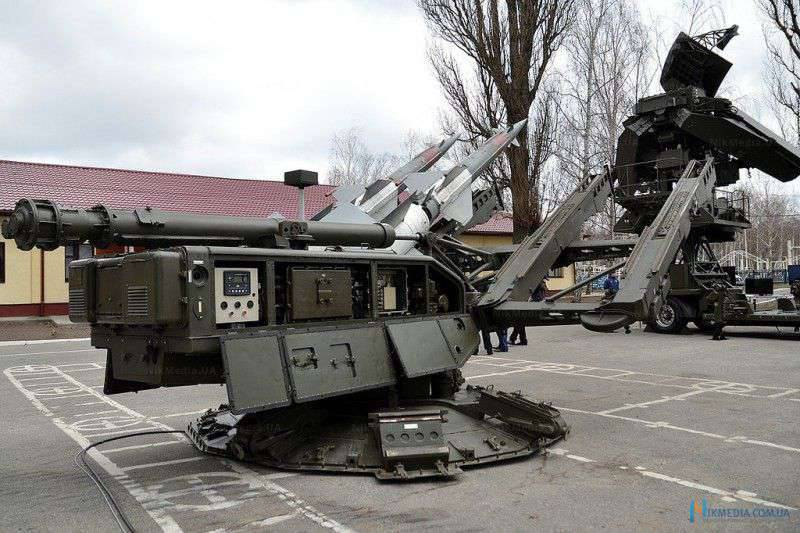
In Ukraine itself, the last un-upgraded C-125 were removed from combat duty in 2005 year. In the spring of 2015, information appeared about the intention of the Ukrainian MO to adopt the C-125-2D “Pechora-2D” anti-aircraft missile system, created on the basis of the C-125М1 late modification. According to the Ukrainian media, in the course of the modernization, all the fixed assets of the complex were completed. This modernization option, originally intended for export, was developed at the research and production enterprise Aerotekhnika in Kiev. The C-125-2D SAM system was tested in the 2010 year. According to the developers, the ZRK resource has been increased by 15 years, the problems of increasing the reliability, mobility, complex survivability and resistance to radio-electronic interference have been solved. It is reported that the modernization and extension of the life span of the 5ВХNUMXД ЗР 27 years and the transfer of all elements of the complex to the mobile chassis are currently underway. In case of adopting the upgraded C-15-125-D-1 air defense system, this will be a strictly necessary measure, designed to at least partially patch the holes in the Ukrainian air defense system. When the C-2-125D Pechora-2D was shown to the leadership of Ukraine, it was said that this complex was designed to solve air defense tasks in the ATO zone, but in reality it could be in combat duty, carrying out anti-aircraft protection of stationary objects in the near zone. On Ukrainian storage bases, the C-2М10 СРК X-NUMX is still located, which is planned to be increased to С-125-1Д.
In the air defense of the Ground Forces there are about 200 short-range air defense systems "Osa-AKM" and "Strela-10M" and about 80 ZSU ZSU-23-4 "Shilka" and ZRPK "Tunguska". What is the state of all this technique is not known reliably, but, it can be assumed that in the conditions of a shortage of financing most of it needs to be repaired. As well as medium-range and long-range air defense systems, the hardware of the bulk of military anti-aircraft complexes is outdated morally and physically, and the anti-aircraft missiles, which were not supplied to the troops for more than 20 years, have long expired storage times and have a low degree of reliability. In recent years, about a half dozen Strela-10М, Osa-AKM, Tunguska air defense missile systems and about a hundred Igla-1 MANPADS underwent restoration and modernization at repair facilities, but this is called a drop in the ocean. At this rate of supply of anti-aircraft weapons to the troops, the Ministry of Defense of Ukraine generally risks being left without a military air defense system.
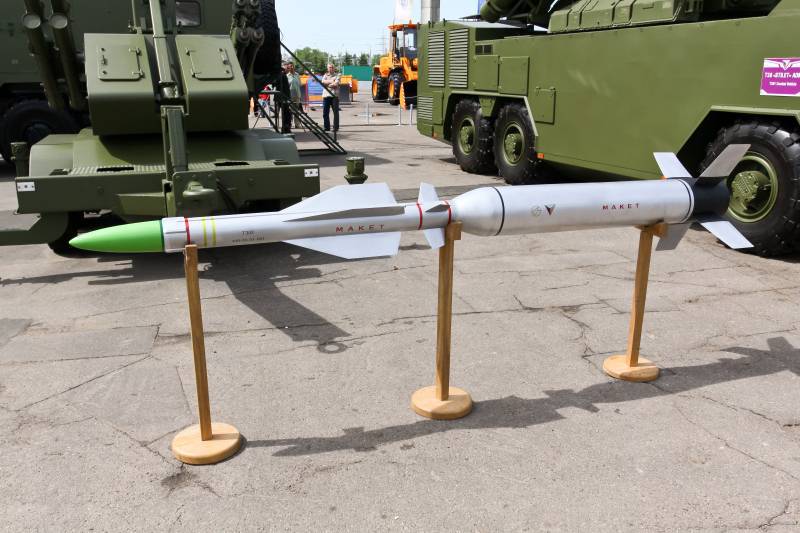
As part of a fundamental improvement in the combat performance of the Osa-AKM air defense missile system, the new Stilett Т38 mobile air defense system was created in cooperation with the Republic of Belarus. The developer of the hardware of the complex is the Belarusian enterprise Tetrahedr, the wheelbase of the MZKT-69222T rough terrain became the base, and a new two-caliber missile system was created at the Luch State Kyiv Design Bureau. If you believe the advertising leaflets of the Tetrahedr and Luch Design Bureau, compared to the 9М33М3 SAM system, the Osa-AKM air defense missile launch missile system T-382 for the T38 air defense missile system doubled, and the speed of the targeted missile doubled. Undoubtedly, the creation of a new T-382 missile for near-field complexes became larger This is clearly not enough for the Ukrainian military-industrial complex, but for the production of a full-fledged air defense system. Under current conditions, Belarus will supply anti-aircraft systems to Ukraine, and even create a package of technical documentation on their own, even with a package of technical documentation, in the foreseeable future. .
To be continued ...
Based on:
http://bmpd.livejournal.com/550589.html
http://news.bigmir.net/ukraine/968390-Ukroboronprom-razrabatyvaet-novejshie-sistemy-PVO
http://myzarya.ru/forum1/index.php?showtopic=6074
http://www.russianarms.ru/forum/index.php?topic=6083.0
http://uos.ua/produktsiya/tehnika-pvo
- Linnik Sergey
- The current state of the air defense of the countries of the former Soviet Union republics. Part 1
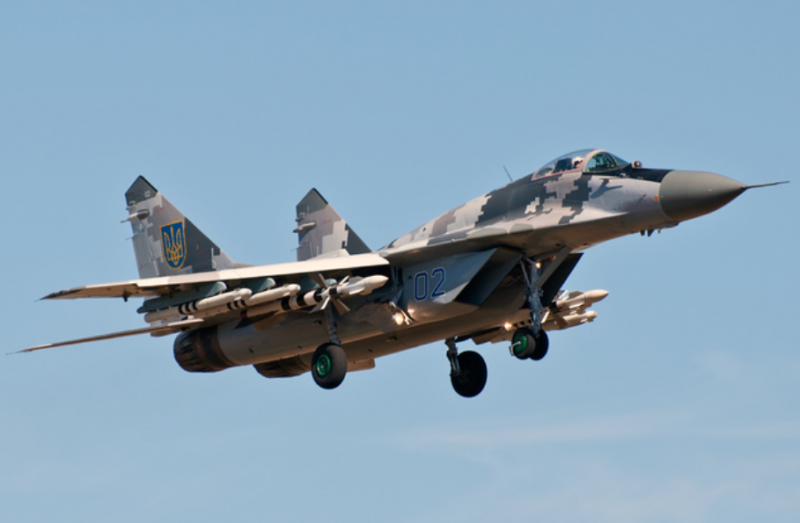
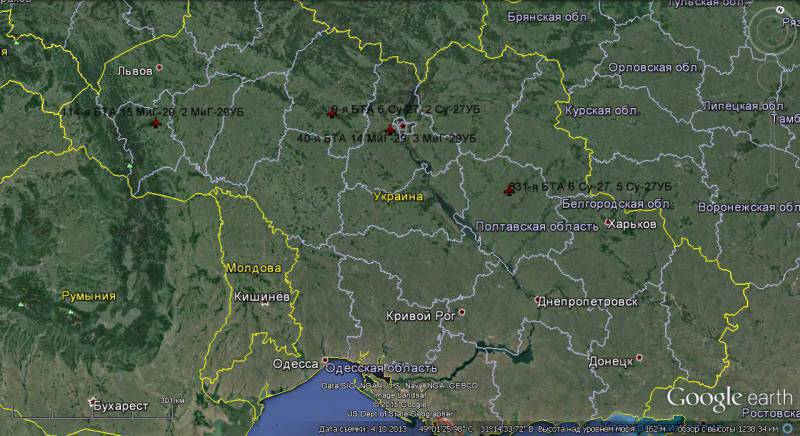
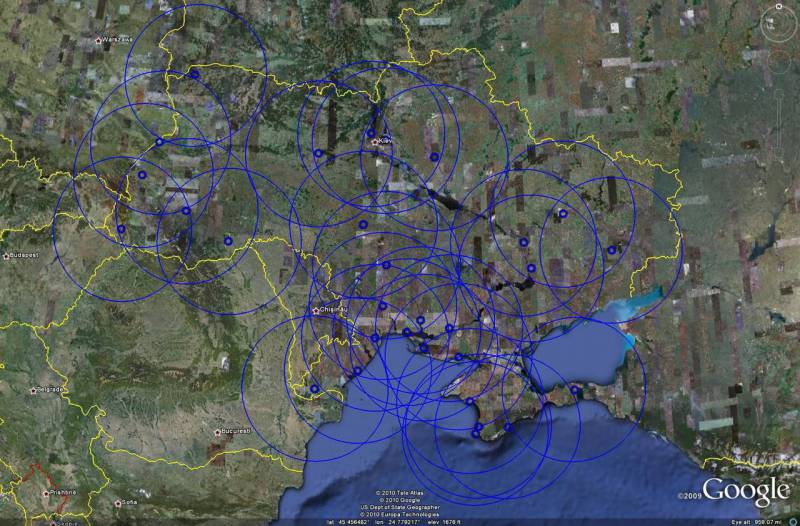
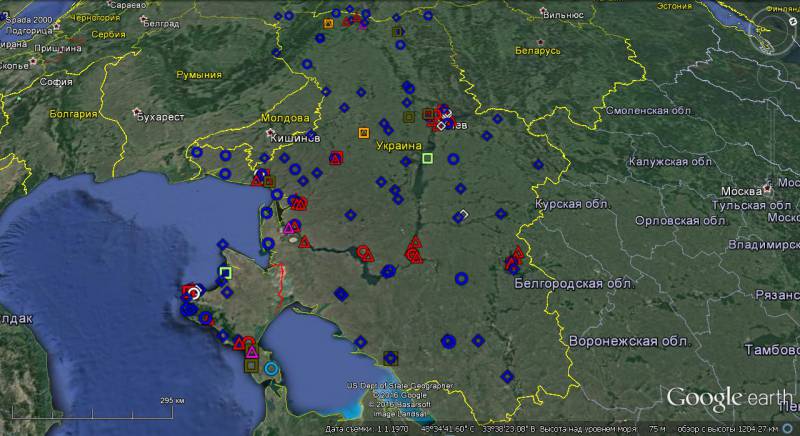
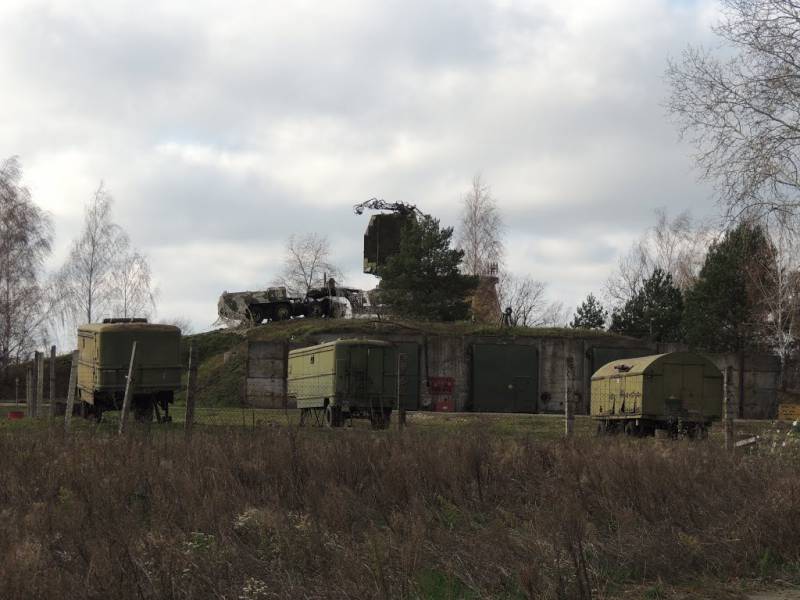
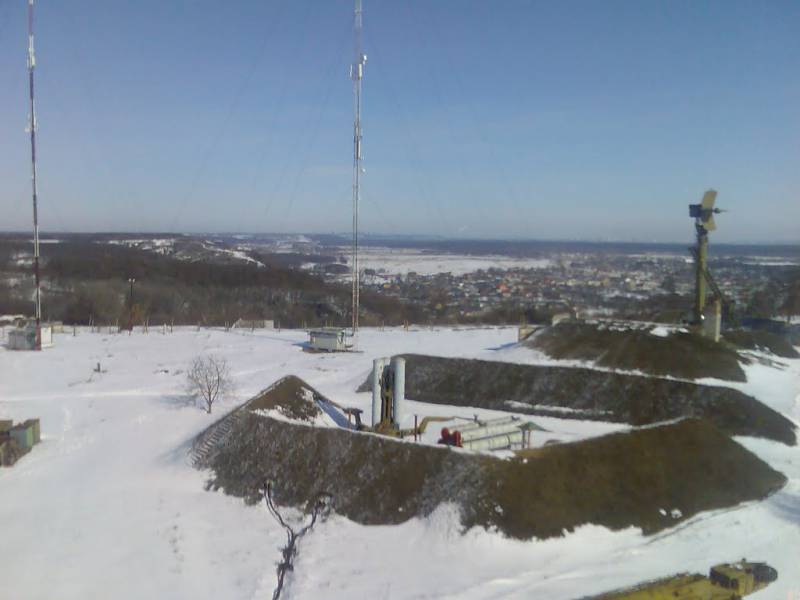
Information